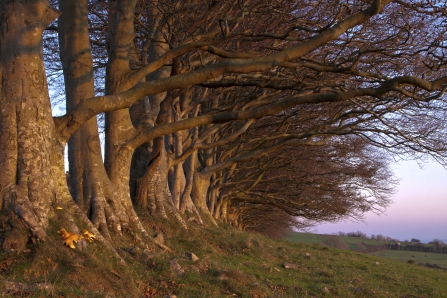Whilst they have been doing these jobs since the beginning of time without a big fuss, it doesn’t come as a surprise that the humble, hardworking tree has been put under the media spotlight and lauded as the ‘instant fix’ for the environmental challenges – both climate and ecological – that our world faces going forwards.
There’s no doubt that we need to increase and improve the quality of tree cover in the UK to address falling biodiversity and rising global temperatures. However, at Somerset Wildlife Trust we believe that restoring wooded habitats – and thus any tree planting activity – must be based on the principle of ‘right tree, right place’.
Before you pick up your spade – remember: nature’s ecosystems are complicated. Planting a tree changes an ecosystem and has a significant impact on the physical characteristics of an environment, such as shading, water cycling and soil pH. Whilst many of these changes are beneficial, in some places tree planting might negatively impact biodiversity in the medium to long term and in time reduce the value of existing ecosystem services or the quality of wildlife habitats.

